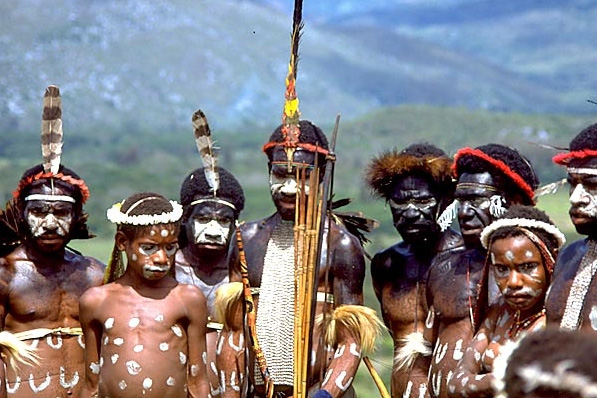PapuaAround.com – Papua is Indonesia’s easternmost province and its territory borders the state of Papua New Guinea.
Papua has a variety of traditions and cultures that are still preserved by the tribes who live here.
The word Papua itself comes from the Malay language which means curly hair, referring to the appearance of the indigenous tribes there.
It is estimated that there are 255 ethnic groups in Papua, each with its own language and culture.
Below are some of the ethnic groups living in Papua.
Asmat
The Asmat tribe is an indigenous Papuan tribe who mostly live in southern Papua.
They live near major rivers such as the Aswets, Pomats, Undir and Bets rivers.
The Asmat tribe can be said to be an isolated area from the outside world and difficult to reach.
They usually make a living by hunting wild animals such as wild boars and also by fishing in rivers. In addition, they also harvest sago palms for daily food.
In social life, the houses of the Asat people are marked with Ye, Je and Yeu.
Ye is a symbol of the house inhabited by bachelors or men in Asmat society, Je is the house inhabited by women and children, and Yeu is used as a center for social and religious activities.
Amungme
The Amungme tribe, also known as Amui or Hamung, is a tribe that lives in the Jayawijaya mountains.
This tribal community lives in groups and builds houses on wooden poles with roofs of reeds or sago palm leaves.
Usually, each Amungme group consists of five to ten families. In their daily life, this tribe uses the Uhunduni language which has several dialects such as Amung, Enggipilu and Damal.
Dani
The Dani tribe is one of the tribes who inhabit the interior of Papua, precisely in the highlands in the middle of the Jayawijaya Mountains.
This tribal community is usually located around the headwaters of major rivers, one of which is the Memberamo River.
In everyday life, the Dani language is similar to the Melanesian and Western Pacific languages.
There are two dialects of their language, namely the West Dani dialect or Lanny and the Great Valley Dani dialect or Dani Baliem.
The Dani tribe is believed to be descended from a wave of human migration that started from the Asian continent thousands of years ago.
Read : Sajojo Dance is a Traditional Papuan Dance
Muyu
The Muyu tribe is a tribe that lives in the Boven Digoel Regency in the province of Papua. Their ancestors used to live near the Muyu River, Merauke.
The Muyu people currently control the bureaucracy of Boven Digoel Regency. Many of them are government employees.
This is because of their frugal, hardworking and educated disposition.
Huli
The Huli tribe is also one of the largest tribes of the Papuan tribe. They paint their faces in yellow, red and white. They are famous for their tradition of making wigs from their own hair.
Tools such as axes with claws also do not miss to equip them to add a scary impression. In conclusion, there are many tribes that inhabit the island of Papua. Some of them have their own uniqueness than other tribes.
As citizens of Indonesia, we must be proud of the island of Papua which holds Indonesia’s natural wealth and its beautiful territory like heaven on earth. We must also be proud and respect our brothers and sisters who are in the interior and in isolated areas.
Korawai
The Korowai tribe inhabit a large area in the lowlands south of the Jayawijaya mountains. The area forms swamps, mangrove forests and wetlands. The Korowai tribe have a belief that they are one of the only humans on earth.
The Korowai tribe is also one of the Papuan tribes who do not wear a koteka. Many people know that the Korowai Tribe is known as a hunter-gatherer who lives in tree houses.
Bauzi
By the United States mission and language agency, the Bauzi tribe is included in the list of 14 isolated tribes. As a tribe that occupies an isolated area, some of the Bauzi tribe men wear a loincloth in the form of a sheet or tree bark that has been dried and then tied with a rope at the end of the genitals.
While the women wear a leaf or dried bark and a rope around their waist to cover their nakedness.
At traditional parties or welcoming guests, adult men wear headdresses of cassowary feathers and smear their bodies with sago. Most of these tribes still live on a hunting and gathering level and are semi-nomadic.

